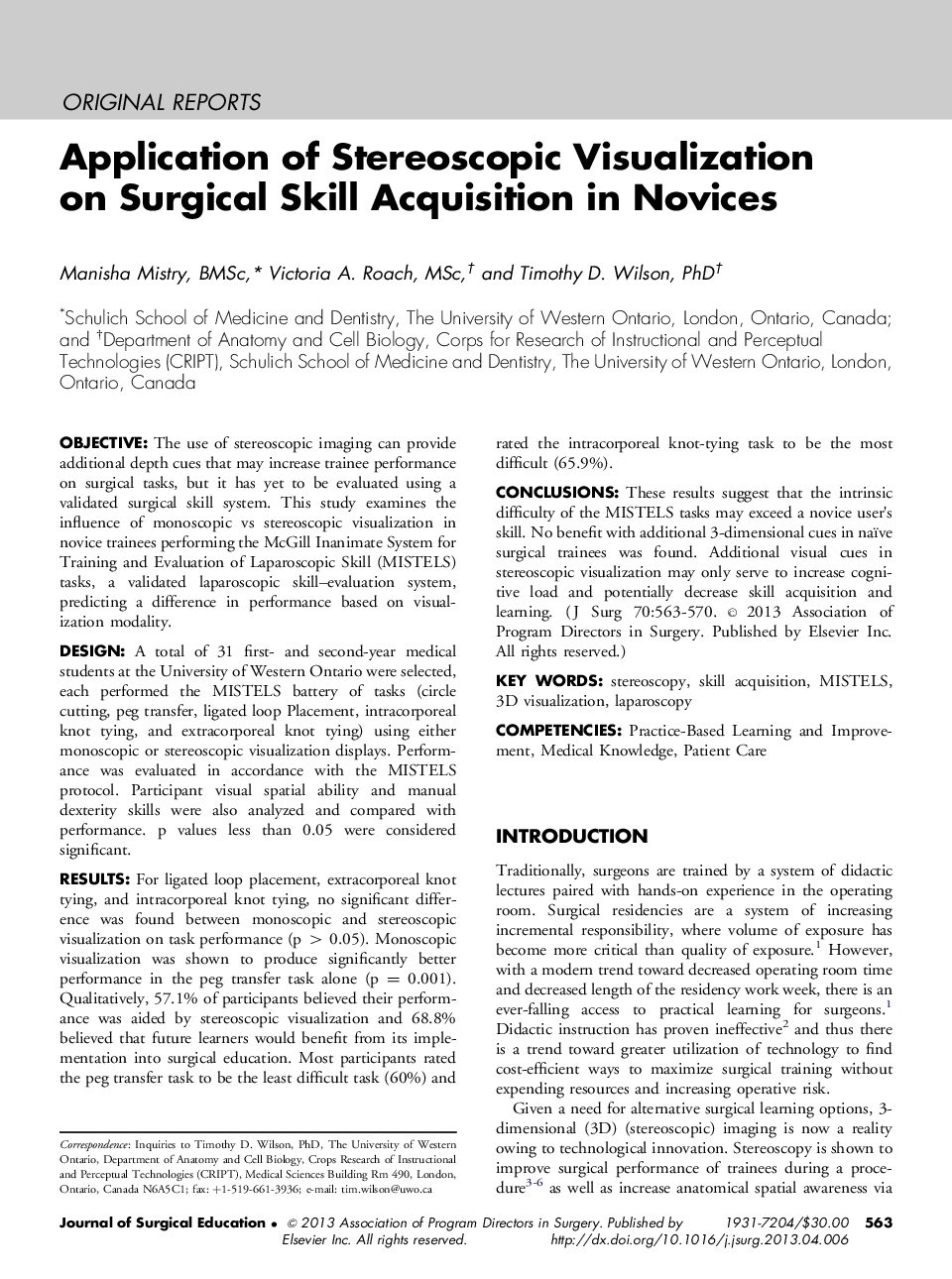| Article ID | Journal | Published Year | Pages | File Type |
|---|---|---|---|---|
| 4298090 | Journal of Surgical Education | 2013 | 8 Pages |
ObjectiveThe use of stereoscopic imaging can provide additional depth cues that may increase trainee performance on surgical tasks, but it has yet to be evaluated using a validated surgical skill system. This study examines the influence of monoscopic vs stereoscopic visualization in novice trainees performing the McGill Inanimate System for Training and Evaluation of Laparoscopic Skill (MISTELS) tasks, a validated laparoscopic skill–evaluation system, predicting a difference in performance based on visualization modality.DesignA total of 31 first- and second-year medical students at the University of Western Ontario were selected, each performed the MISTELS battery of tasks (circle cutting, peg transfer, ligated loop Placement, intracorporeal knot tying, and extracorporeal knot tying) using either monoscopic or stereoscopic visualization displays. Performance was evaluated in accordance with the MISTELS protocol. Participant visual spatial ability and manual dexterity skills were also analyzed and compared with performance. p values less than 0.05 were considered significant.ResultsFor ligated loop placement, extracorporeal knot tying, and intracorporeal knot tying, no significant difference was found between monoscopic and stereoscopic visualization on task performance (p > 0.05). Monoscopic visualization was shown to produce significantly better performance in the peg transfer task alone (p = 0.001). Qualitatively, 57.1% of participants believed their performance was aided by stereoscopic visualization and 68.8% believed that future learners would benefit from its implementation into surgical education. Most participants rated the peg transfer task to be the least difficult task (60%) and rated the intracorporeal knot-tying task to be the most difficult (65.9%).ConclusionsThese results suggest that the intrinsic difficulty of the MISTELS tasks may exceed a novice user's skill. No benefit with additional 3-dimensional cues in naïve surgical trainees was found. Additional visual cues in stereoscopic visualization may only serve to increase cognitive load and potentially decrease skill acquisition and learning.
